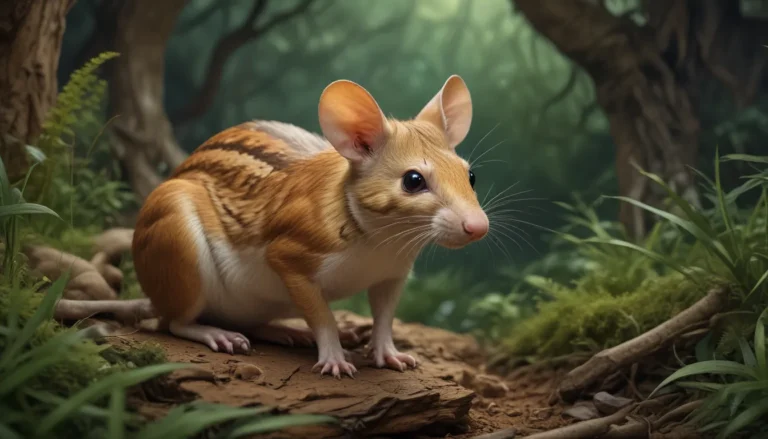The pictures we use in our articles might not show exactly what the words say. We choose these pictures to make you interested in reading more. The pictures work together with the words but don’t take their place. The words still tell you the important facts.
Rocky Mountain wolves, also known as gray wolves or timber wolves, are captivating creatures that inhabit the rugged landscapes of the Rocky Mountains in western North America. These majestic animals have long been symbols of the untamed spirit of nature, with their beautiful gray coats, piercing eyes, and incredible hunting skills.
Despite facing extinction in the past due to habitat loss, hunting, and misconceptions, Rocky Mountain wolves have made a remarkable comeback thanks to conservation efforts and reintroduction programs. Today, they serve as a reminder of the importance of coexisting with the natural world and preserving their habitat for future generations to enjoy.
Unveiling the Mystique of Rocky Mountain Wolves
1. A Subspecies of the Gray Wolf
The Rocky Mountain wolf, scientifically known as Canis lupus irremotus, is a subspecies of the gray wolf specially adapted to the unique environment of the Rocky Mountains region.
2. Highly Adaptable Creatures
Known for their adaptability, Rocky Mountain wolves can thrive in various habitats, including forests, mountains, and semi-arid environments, showcasing remarkable resilience in the face of changing landscapes.
3. Strong Family Bonds
Living in packs led by an alpha male and female, Rocky Mountain wolves exhibit strong social bonds within their family units. These packs work together to hunt, raise their young, and defend their territory, showcasing a remarkable sense of cooperation.
4. Apex Predators and Skilled Hunters
Rocky Mountain wolves are apex predators, with their diet primarily consisting of ungulates such as elk, deer, and moose. Their impressive hunting skills, combined with teamwork and strategic approaches, make them efficient hunters in their ecosystem.
5. Iconic Howls
The distinctive howls of Rocky Mountain wolves resonate through the wilderness, serving as a form of communication, territorial marking, and a means to maintain cohesion within the pack. Their haunting calls add to the mystique of these magnificent creatures.
6. Ecological Balance Keepers
Playing a crucial role in maintaining ecosystem balance, Rocky Mountain wolves regulate prey populations, prevent overgrazing, and promote healthier vegetation through their predatory behavior, showcasing their importance in the natural world.
7. Conservation Efforts
Facing threats from habitat loss and hunting, Rocky Mountain wolves have been the focus of conservation efforts aimed at protecting and restoring their populations in various regions, highlighting the importance of safeguarding these iconic animals.
8. Strength and Endurance
With powerful jaws and muscular bodies, Rocky Mountain wolves are built for endurance. They can cover vast distances while hunting, showcasing their physical prowess in navigating the rugged terrain of the Rocky Mountains.
9. Lifespan in the Wild
In their natural habitat, Rocky Mountain wolves have an average lifespan of 7-10 years, with some individuals living up to 13 years or more under favorable conditions, showcasing their ability to thrive in the wild.
10. Proficient Swimmers
Contrary to popular belief, Rocky Mountain wolves are excellent swimmers and can navigate lakes and rivers with ease, showcasing their adaptability to diverse environments and their capability to explore new territories.
11. Cultural Symbols of Wilderness and Conservation
The presence of Rocky Mountain wolves in the ecosystem holds significant cultural and symbolic value as an emblem of the wild. Their conservation represents the importance of preserving our natural heritage for future generations, underscoring the need to protect these majestic creatures.
Embracing the Conservation of Rocky Mountain Wolves
As we delve into the world of Rocky Mountain wolves and unravel their fascinating traits, it becomes evident that their existence is crucial for maintaining the ecological balance of their habitat. By understanding and appreciating these remarkable creatures, we can contribute to their conservation and ensure their rightful place in the wilderness for generations to come.
Frequently Asked Questions
Q: Are Rocky Mountain wolves dangerous to humans?
A: Rocky Mountain wolves are generally not a threat to humans and tend to avoid human contact.
Q: How many Rocky Mountain wolves are left in the wild?
A: Approximately 1,700 to 2,000 Rocky Mountain wolves are estimated to inhabit the wild.
Q: What do Rocky Mountain wolves eat?
A: Their diet primarily consists of large ungulates such as elk, deer, and moose, supplemented by smaller mammals when larger prey is scarce.
Q: Do Rocky Mountain wolves live in packs?
A: Yes, Rocky Mountain wolves are highly social animals that live in packs led by a dominant alpha pair.
Q: How can I support the conservation of Rocky Mountain wolves?
A: You can support their conservation by getting involved with wildlife organizations, advocating for protected areas, spreading awareness, and supporting research initiatives focused on their preservation.
By immersing ourselves in the world of Rocky Mountain wolves and understanding their ecological significance, we can contribute to the conservation efforts aimed at protecting these iconic creatures and preserving the beauty of the wilderness they call home. Let us join hands in safeguarding the future of Rocky Mountain wolves and ensuring their continued survival in the untamed landscapes of the Rocky Mountains.






